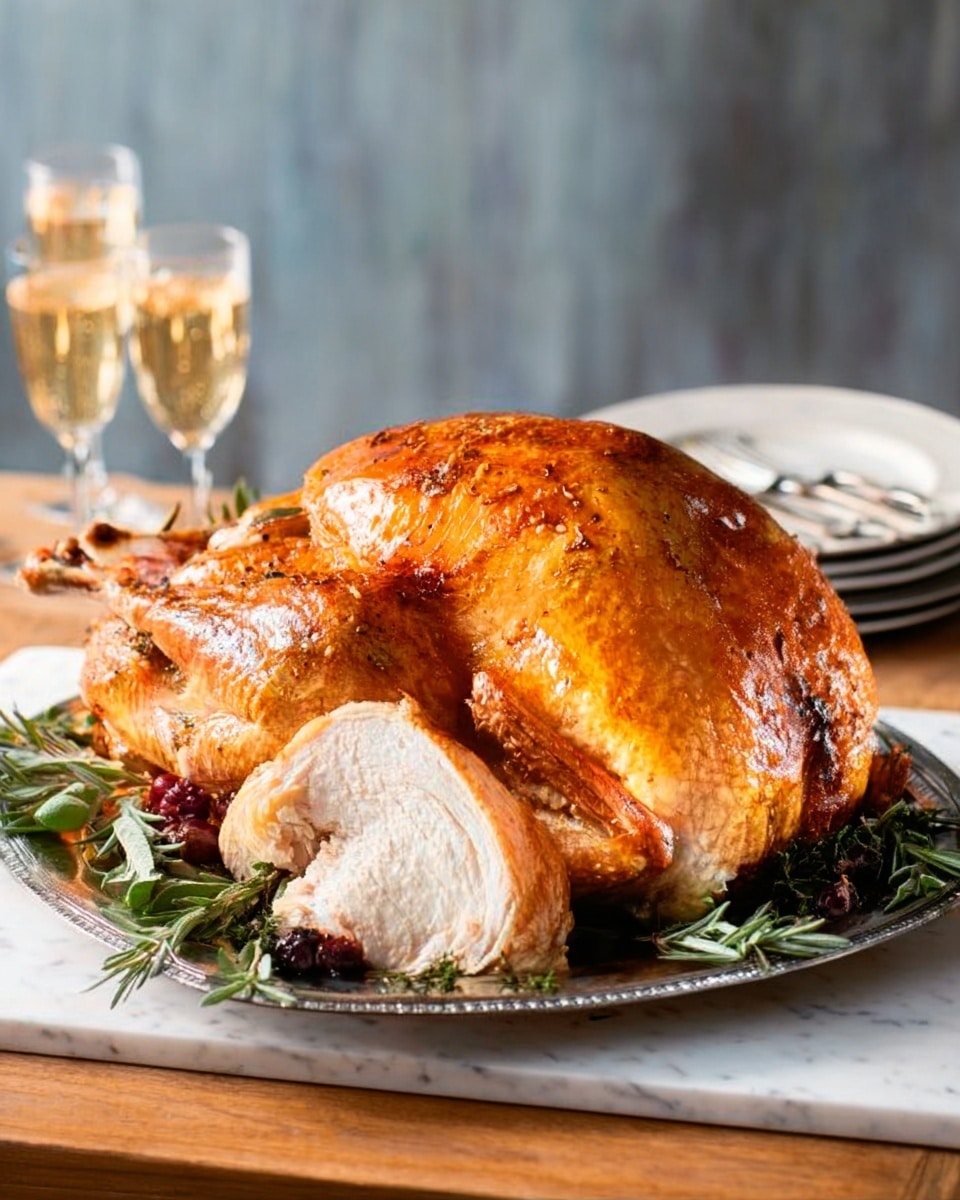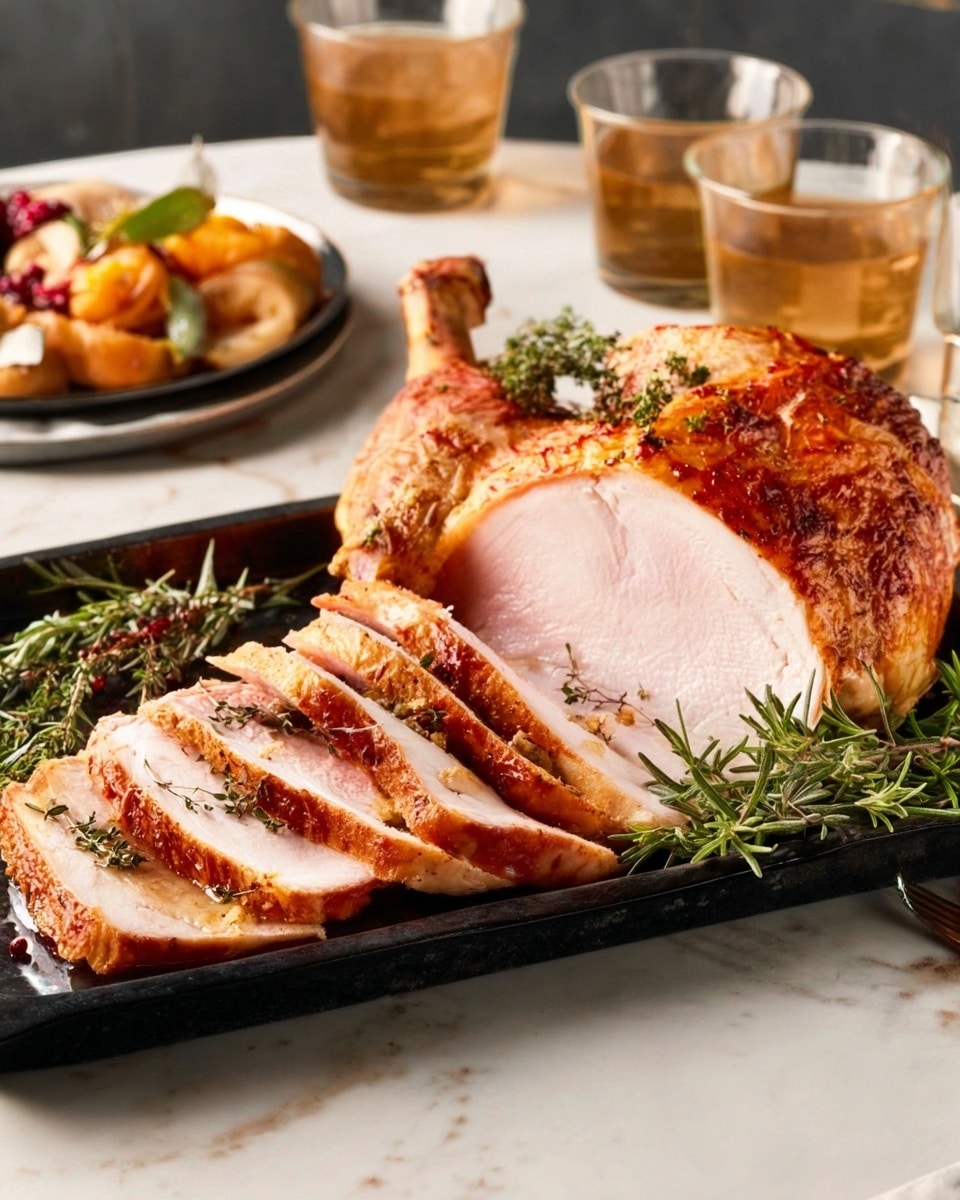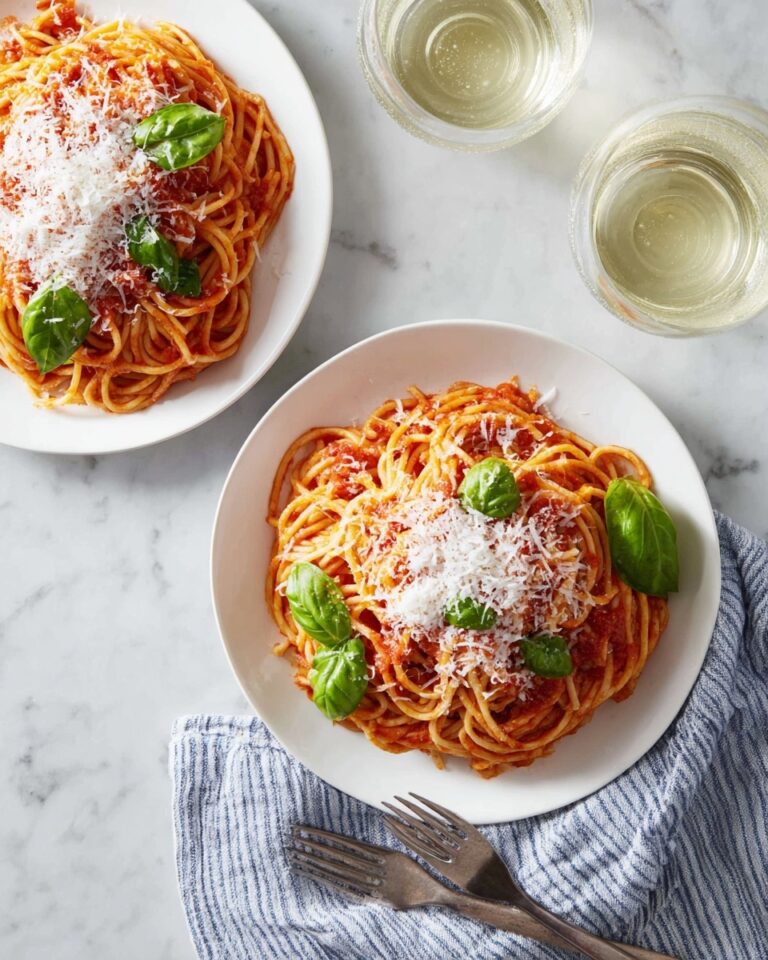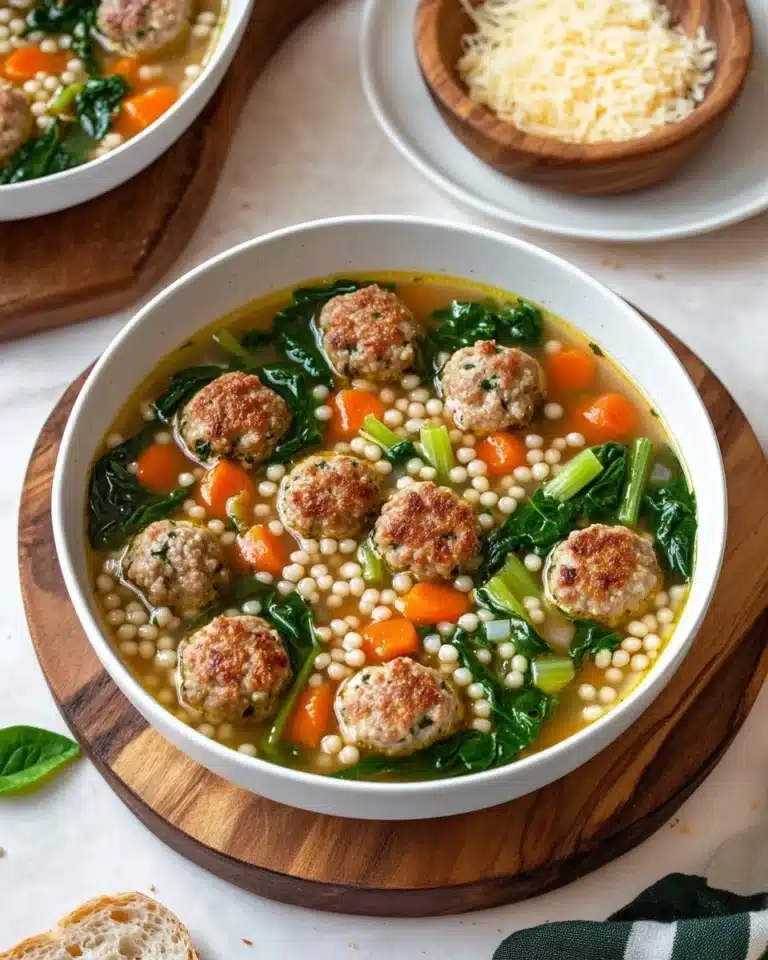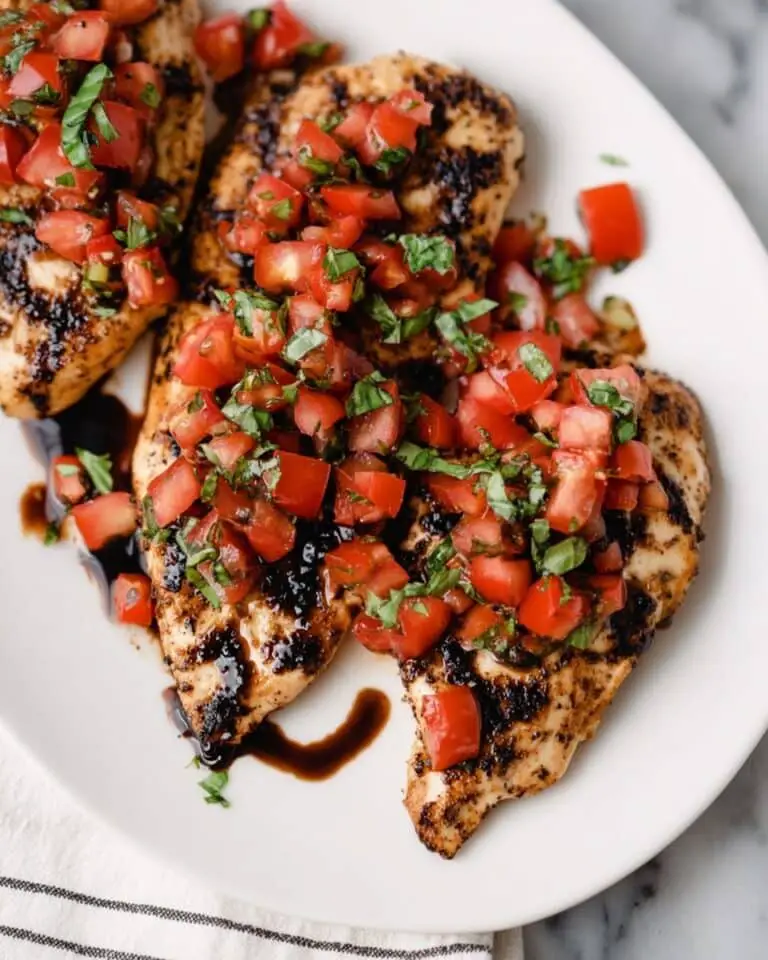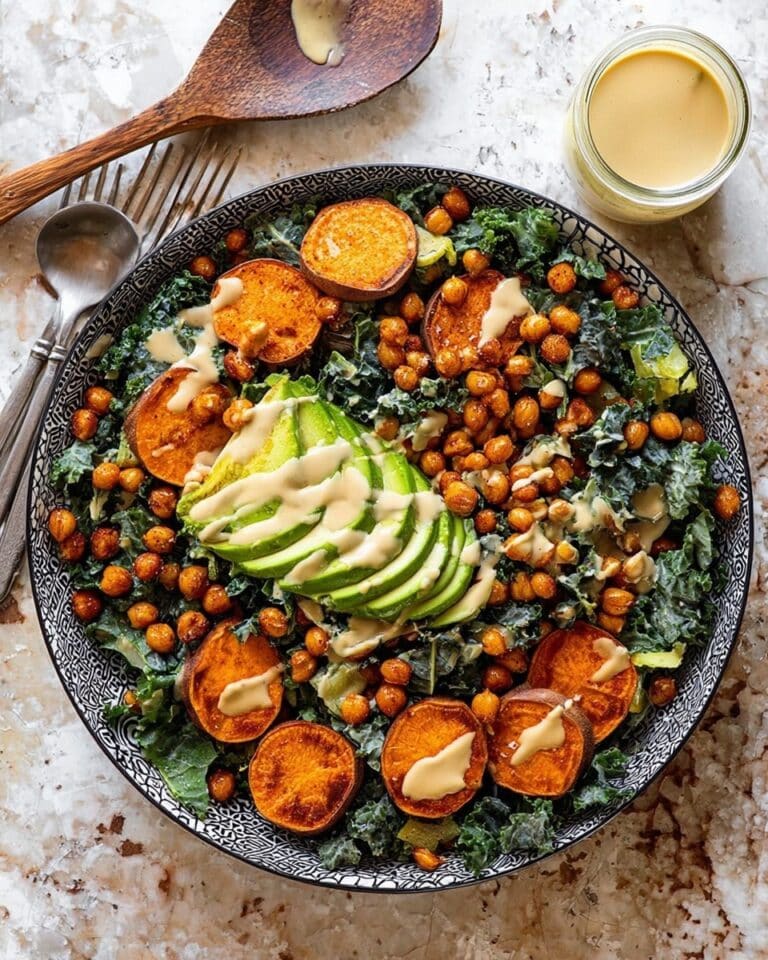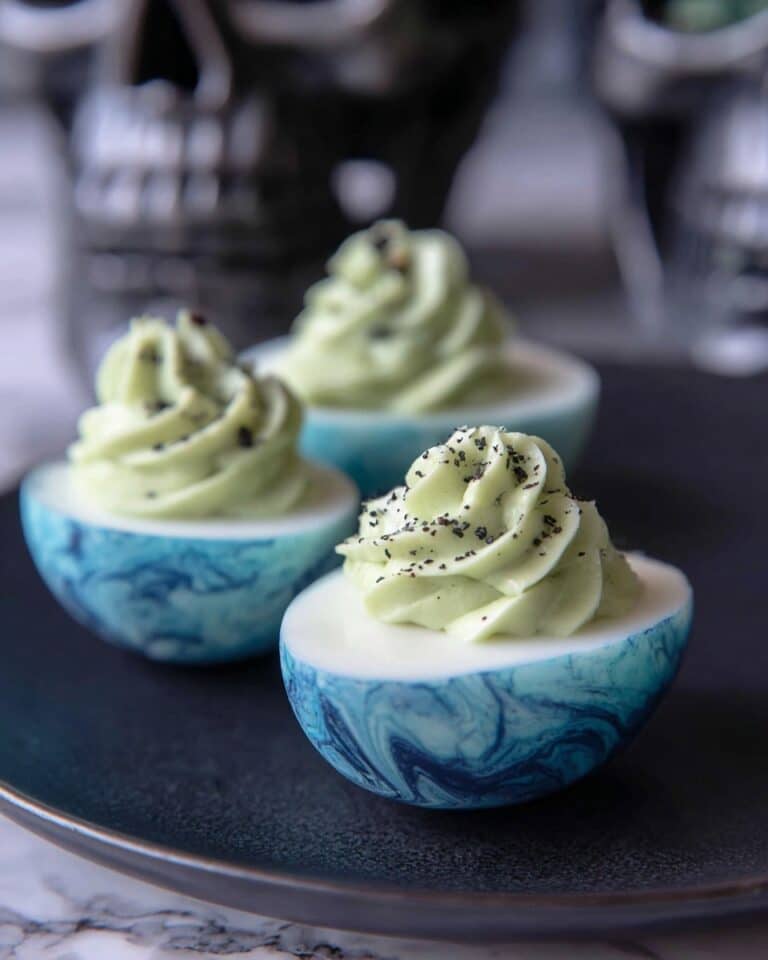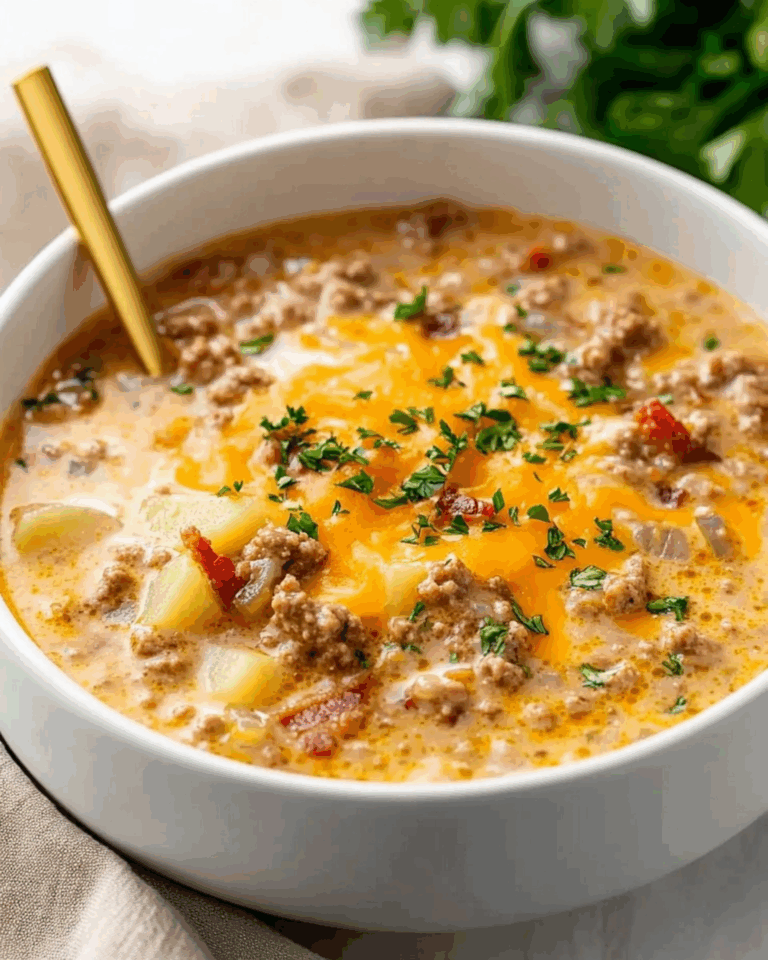If you’ve been on the hunt for a foolproof way to get juicy, flavorful turkey every single time, I’ve got a secret weapon for you: the Herb and Salt-Rubbed Dry Brine Turkey Recipe. I absolutely love how this method locks in all those fresh, garden-y herb flavors while the salt gently seasons the meat deep down. It’s not just tasty—it’s pure magic when you want a moist turkey with a perfectly crisp skin without any fuss.
What makes this recipe special is how it works in advance, giving you a laid-back approach to the big turkey day. The dry brine means you don’t have to fuss with complicated basting or worrying about dryness. Whether it’s for your holiday feast or just a weekend family dinner, this Herb and Salt-Rubbed Dry Brine Turkey Recipe will quickly become your go-to because it guarantees a show-stopping bird every time.
Why You’ll Love This Recipe
- Deep Flavor Infusion: The herb and salt rub soaks into the meat over days, making every bite richly seasoned.
- Juicy, Moist Turkey: Dry brining helps retain moisture without adding excess water, keeping your turkey tender.
- Crispy, Lovely Skin: Air-drying the turkey uncovered overnight before roasting ensures a beautifully crisped skin.
- Stress-Free Preparation: Most of the work is done in advance, giving you more relaxed time on cooking day.
Ingredients You’ll Need
Each ingredient in the Herb and Salt-Rubbed Dry Brine Turkey Recipe plays its part perfectly, balancing fresh and dried herbs with the essential salt and olive oil. These work in harmony to give the bird irresistible flavor and texture that you’ll notice from first slice to last.
- Fresh Thyme: Adds a subtle woodsy aroma and brightness that pairs beautifully with poultry.
- Fresh Sage: Known for its earthy, slightly peppery taste—it’s a holiday staple for good reason.
- Fresh Rosemary: Provides a piney, resilient flavor that stands out without overpowering.
- Dried Marjoram: Offers a mild sweetness that compliments fresh herbs well.
- Dried Oregano: Brings a warm, slightly bitter undertone to tie the flavors together.
- Extra-Virgin Olive Oil: Acts as a flavorful binder and helps the herbs stick under the skin for deeper infusion.
- Turkey: I recommend a fresh 16-lb turkey (not kosher or self-basting if possible) to get the best texture and flavor.
- Kosher Salt (Diamond Crystal preferred): Essential for the dry brine, drawing moisture out and creating concentrated flavor—adjust quantity if using Morton’s salt.
Variations
One of my favorite things about the Herb and Salt-Rubbed Dry Brine Turkey Recipe is how easy it is to tweak based on what you have or the flavors you love. Feel free to play around with the herbs or add extras to suit your palate.
- Garlic and Lemon Zest: When I first added garlic powder and a touch of lemon zest, it brightened the whole bird and brought a fresh zing that my family went crazy for.
- Smoky Paprika: Add a smoky paprika pinch if you want a warm, slightly spicy twist that’s unexpected but delicious.
- Herb Mix Adjustments: Swap out marjoram or oregano for fresh parsley or tarragon if you want something a bit lighter or more floral.
- Salt Type Variation: I used Morton’s kosher salt once by accident and learned to reduce amount because it’s denser; Diamond Crystal works best for perfect brining.
How to Make Herb and Salt-Rubbed Dry Brine Turkey Recipe
Step 1: Prepare Your Herb and Oil Mixture
Four days before roasting, mix your fresh thyme, sage, rosemary, dried marjoram, oregano, and extra-virgin olive oil in a small bowl. This blend not only smells divine but ensures your turkey is infused with an irresistible herbal flavor. Trust me, taking this prep time is what transforms the turkey from ordinary to extraordinary.
Step 2: Loosen the Skin and Apply Herb Rub
Remove the neck and giblets (save them for stock if you like). Gently loosen the skin around the shoulders and cavity, being careful not to tear it. Then carefully slide your hands under the skin around the breasts and drumsticks and rub the herb-oil mixture directly onto the meat beneath. It feels a bit strange at first, but this step is critical to lock in flavor and moisture right where it counts.
Step 3: Salt and Season the Turkey
Rub kosher salt both inside the cavity and all over the skin. The salt creates that magic dry brine effect, pulling moisture out and then reabsorbing it for amazing tenderness. Tuck the wing tips behind the neck and tie the legs together with kitchen twine to help the bird stay compact and cook evenly.
Step 4: Bag and Refrigerate for the Dry Brine
Place the turkey inside a large food-safe plastic bag (turkey-size roasting bags are great). Seal it tightly, then put that bag inside a second bag, sealing it again to avoid any drips or contamination. Place the turkey on a rimmed baking sheet and refrigerate it, flipping the bird every day, for three days. This step is key—you’ll notice your turkey absorbs all that seasoning deeply and starts developing a beautiful flavor profile.
Step 5: Air-Dry Overnight Before Roasting
On the fourth day, take the turkey out of the bags and pat it dry with paper towels. Transfer it to a large roasting pan without covering it and let it hang out in the fridge overnight. This air-drying helps the skin get seriously crisp when it roasts. I used to skip this step, and honestly, I could tell the difference in texture immediately!
Step 6: Bring to Room Temperature and Roast
Before roasting, let your turkey rest on the counter for 1–3 hours to take the chill off—this helps it cook evenly. Place the turkey breast side up on a rack sprayed lightly with oil inside a shallow roasting pan with 2 to 2½ inch sides. Preheat your oven to 350°F on convection roast if you have that setting.
Roast until a thermometer inserted into the thickest part of the thigh (not touching the bone) registers 170°F, which usually takes about 1½ to 2 hours depending on your bird’s size. Then, rest the turkey for at least 30 minutes before carving so the juices settle—this is when that dry brine really shines, keeping every bite juicy and tender.
Pro Tips for Making Herb and Salt-Rubbed Dry Brine Turkey Recipe
- Loosen Skin Gently: I learned that carefully separating the skin without tearing it lets the herb mixture get right to the meat, which is a game changer for flavorful turkey.
- Use Diamond Crystal Kosher Salt: It’s lighter and more porous than other salts, so the brine is perfectly balanced without over-salting.
- Air-Dry Overnight: Never skip this step! It’s the secret to crispy skin and helps the flavors really set in for an extra gorgeous bird.
- Trust the Thermometer: I avoid guessing cooking times by using a probe thermometer—pull the bird at 170°F in the thigh for safe, juicy results every time.
How to Serve Herb and Salt-Rubbed Dry Brine Turkey Recipe
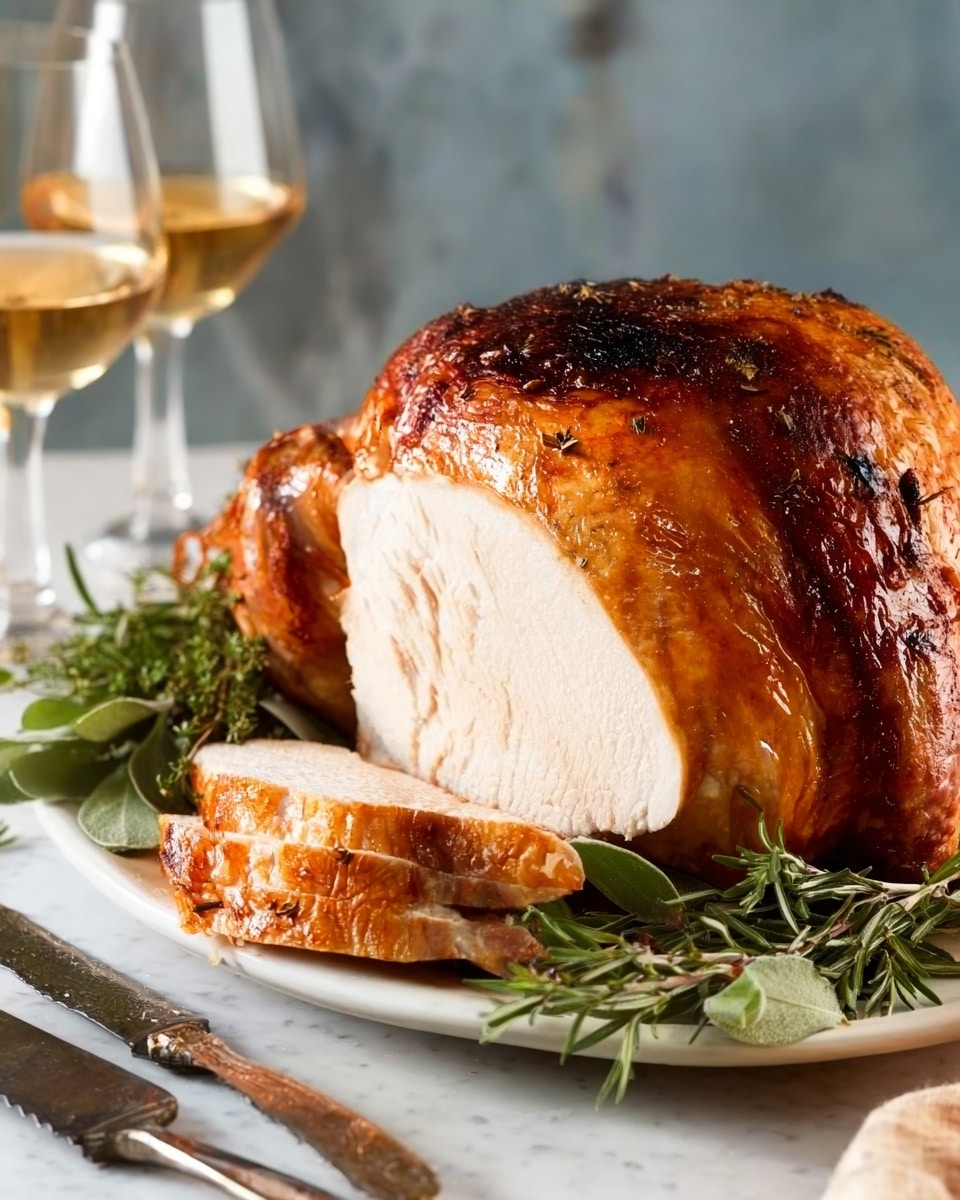
Garnishes
I usually garnish my turkey platter with fresh sprigs of thyme and rosemary—this adds a pop of green and a lovely aromatic touch. Sometimes I’ll toss in a few roasted lemon halves for color and a hint of citrus zest that makes the whole presentation feel fresh and inviting.
Side Dishes
To round out this herbaceous turkey, I love pairing it with classic sides like creamy mashed potatoes, buttery green beans almondine, and my go-to homemade cranberry sauce. Roasted root vegetables or a simple garlic herb stuffing also complement the flavors perfectly and make your meal feel complete.
Creative Ways to Present
For special occasions, I’ve laid the carved turkey slices over a bed of sautéed kale and toasted pecans for a festive, colorful spread. Another favorite is serving the turkey with a drizzle of pan gravy alongside edible flowers and microgreens for an impressive restaurant-style look at home.
Make Ahead and Storage
Storing Leftovers
Once carved, I store leftover turkey in airtight containers in the fridge for up to three days. Be sure to slice the meat to smaller portions for even reheating later. I learned this cut-up method helps keep the turkey moist and makes leftovers more convenient to enjoy.
Freezing
This turkey freezes beautifully! I wrap leftover slices tightly in plastic wrap and then foil, placing them in freezer bags. When you’re ready for a quick meal, thaw overnight in the fridge, making it super handy to add turkey to sandwiches or salads down the line.
Reheating
To keep reheated turkey from drying out, I warm leftovers gently in the oven at 300°F, covered loosely with foil, and add a splash of broth or pan drippings. This method keeps the meat juicy and tender, so you’ll enjoy it just as much the next day as the first.
FAQs
-
How far in advance should I start the Herb and Salt-Rubbed Dry Brine Turkey Recipe?
Start the dry brine process four days ahead of roasting. This timeline allows the salt and herbs enough time to penetrate the turkey deeply, resulting in juicy, flavorful meat and crispy skin.
-
Can I use frozen turkey for this dry brine recipe?
You can, but only if the turkey is fully thawed before starting the dry brine. I always recommend fresh turkey if possible because it tends to have better texture and flavor with this method.
-
Do I really need to air-dry the turkey overnight?
Yes! Air-drying uncovered overnight in the fridge is key for crispy skin. Skipping this step will result in less crispness, so I wouldn’t recommend it.
-
What if I don’t have all the fresh herbs?
Feel free to substitute with dried herbs, but keep quantities lower since dried herbs are more concentrated. You can also tweak the herb mix to what you enjoy or have on hand.
-
How do I know when the turkey is fully cooked?
The best way is to cook the turkey until the thickest part of the thigh reaches 170°F on an instant-read or probe thermometer—this ensures safety and perfect juiciness.
Final Thoughts
This Herb and Salt-Rubbed Dry Brine Turkey Recipe has totally changed the way I approach roasting poultry. It’s hands-off but results in a bird that’s bursting with fresh herb flavor, tender juiciness, and skin so crisp it might just steal the show. Honestly, I can’t recommend it enough—whether you’re tackling your first turkey or you’re a seasoned pro, give this method a try, and you’ll have everyone asking for seconds (and your secret!).
Print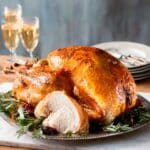
Herb and Salt-Rubbed Dry Brine Turkey Recipe
- Prep Time: 1 hr
- Cook Time: 3 hr
- Total Time: 4 days 4 hr
- Yield: 16 servings
- Category: Main Dish
- Method: Roasting
- Cuisine: American
Description
This Herb and Salt-Rubbed Dry Brine Turkey recipe is a flavorful and juicy method to prepare a 16-lb turkey. The bird is dry brined with a mixture of fresh and dried herbs along with kosher salt over four days, allowing the flavors to deeply penetrate the meat while enhancing moisture retention. Roasting the turkey to perfection at controlled oven temperatures results in tender, aromatic meat with crispy skin—the ideal centerpiece for holiday meals or special occasions.
Ingredients
Herb Mixture
- 2 tablespoon chopped fresh thyme
- 2 tablespoon chopped fresh sage
- 1 tablespoon chopped fresh rosemary
- 1 tablespoon dried marjoram
- 1/2 tablespoon dried oregano
- 1 tablespoon extra-virgin olive oil
Main Ingredient
- 1 16-lb turkey, thawed or fresh (preferably fresh, not kosher or self-basting)
Dry Brine
- 1/4 cup Diamond Crystal Kosher Salt (adjust quantity if using Morton’s kosher salt)
Instructions
- Prepare the Herb and Oil Mixture: Four days before roasting, mix the fresh thyme, sage, rosemary, dried marjoram, dried oregano, and olive oil in a small bowl until combined.
- Prepare the Turkey: Remove the neck and giblets from the turkey and reserve for stock if desired. Gently loosen the skin around the shoulders, breast, thighs, and drumsticks by sliding your hands underneath without tearing the skin.
- Apply Herb Rub: Rub the herb and olive oil mixture directly onto the meat beneath the skin, ensuring even coverage. Pat the skin back into place gently.
- Salt the Turkey: Rub kosher salt inside the turkey cavity and on the skin surface. Tuck the wing tips behind the neck and tie the legs together securely with kitchen twine.
- Bag and Refrigerate: Place the turkey inside a large food-safe plastic bag, tie it closed, then place inside a second bag and tie again to prevent leaks. Put the turkey on a rimmed baking sheet and refrigerate, flipping it over once per day for three days to ensure even brining.
- Air-Dry the Turkey: On the fourth day, remove the turkey from the bags and pat dry thoroughly with paper towels. Transfer to a large roasting pan and refrigerate uncovered overnight to dry the skin, which promotes crispiness during roasting.
- Bring to Room Temperature: Remove the turkey from the refrigerator, allowing it to temper on the countertop for 1 to 3 hours before roasting.
- Prepare for Roasting: Place the turkey breast side up on a rack lightly sprayed with oil in a shallow roasting pan approximately 2 to 2½ inches deep.
- Preheat Oven and Insert Thermometer: Position a rack in the bottom third of the oven and preheat to 350°F using the convection roast setting. Insert a probe thermometer into the thickest part of the thigh without touching the bone, setting target temperature to 170°F.
- Roast the Turkey: Roast the turkey until the thermometer reads 170°F in the thigh, which typically takes about 1½ to 2 hours but may vary by bird size.
- Rest the Turkey: Remove the turkey from the oven and let it rest for at least 30 minutes before carving to allow juices to redistribute and ensure moist, tender meat.
Notes
- You can customize the herb Rub by adding garlic powder, lemon zest, black pepper, or dried bay leaf for additional flavor layers.
- Use Diamond Crystal kosher salt for accurate salting; if using Morton’s kosher salt, reduce the quantity accordingly due to salt granule size differences.
- Loosening skin carefully avoids tearing which keeps the herb mixture in place during brining.
- The dry brine process enhances moisture retention and flavor, so do not skip or shorten the 4-day process for best results.
- Allowing the turkey to air-dry uncovered on the last day encourages crisp skin when roasting.
Nutrition
- Serving Size: 6 oz turkey breast skinless
- Calories: 225
- Sugar: 0 g
- Sodium: 896.5 mg
- Fat: 3.5 g
- Saturated Fat: 1 g
- Unsaturated Fat: 2 g
- Trans Fat: 0 g
- Carbohydrates: 0 g
- Fiber: 0 g
- Protein: 45.5 g
- Cholesterol: 121 mg

